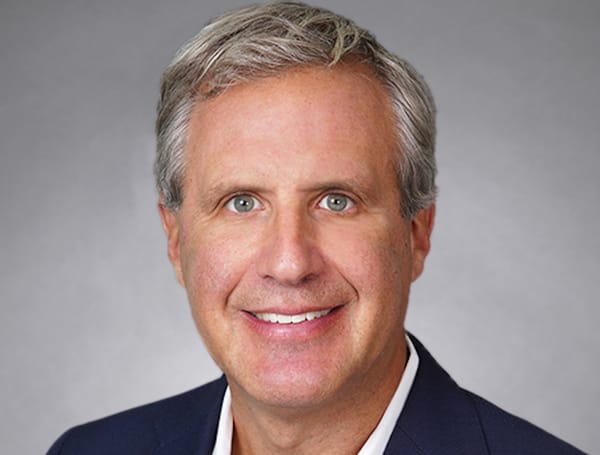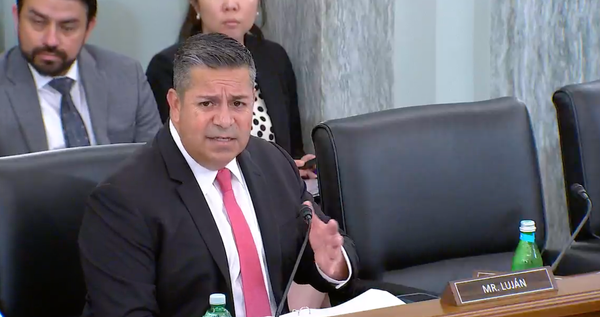What Role Does Entertainment, E-government, and Telemedicine Play in Driving Broadband?
WASHINGTON, December 2, 2008 – Officials representing the users of high-speed internet services – particularly in the fields of entertainment, e-government, and telemedicine – will appear at the next monthly event of the Broadband Breakfast Club on Tuesday, December 9.
Officials from Walt Disney, Public Technology Institute, Institute for e-Health Policy, App-Rising.com and BroadbandCensus.com at Broadband Breakfast Club on December 9
Press Releases
WASHINGTON, December 2, 2008 – Officials representing the users of high-speed internet services – particularly in the fields of entertainment, e-government, and telemedicine – will appear at the next monthly event of the Broadband Breakfast Club on Tuesday, December 9.
The panelists are Susan Fox, vice president of government relations for Walt Disney; Neal Neuberger, executive director of the Institute for e-Health Policy; Alan Shark, executive director of the Public Technology Institute; and Geoff Daily, a telecom blogger at App-Rising.com.
The discussion will be centered around the theme of “How Applications and Broadband Mapping Harness Demand for High-Speed Internet.” As with each monthly meeting of the breakfast club, the discussion will take place at the Old Ebbitt Grill, at 675 15th Street NW, in Washington.
Breakfast host and moderator Drew Clark, executive director of BroadbandCensus.com, will join in the discussion and offer his perspective on how broadband mapping can help aggregate demand for high-speed services.
Adoption of broadband is widely regarded as one of at least three core components of a national broadband strategy that also includes access (broadband is universally available) and affordability (prices for broadband are falling, as with other information-economy goods).
The Broadband Breakfast Club discussion on December 9 aims to energetically dive into the issue of broadband adoption. What applications are necessary to drive demand? What can policy-makers do to promote broadband demand? What role can information about availability and affordability – such as the free data on BroadbandCensus.com – play in harnessing this demand into new high-speed subscribers?
Beginning at 8 a.m., an American plus Continental breakfast is available downstairs in the Cabinet Room. This is followed by a discussion, beginning around 8:40 a.m. and ending at 10 a.m. The breakfast club meets on the second Tuesday of each month until March 2009. The registration page for the event is http://broadbandbreakfast.eventbrite.com.
The November meeting, “Should Government Funding Be Part of a National Broadband Plan?” featured a discussion with Stan Fendley of Corning, Kyle McSlarrow of the National Cable and Telecommunications Association and telecommunications consultant John Windhausen, Jr.
The meeting on Tuesday, January 13, 2009, will be on “What Will Broadband Do to the Universal Service Fund?” It will feature Gregory Rohde, Executive Director, E-Copernicus/E9-1-1 Institute, and other panelists.
The meeting on Tuesday, February 10, 2009, will be on “The Role of Wireless Frequencies in Widespread Broadband Deployment.”
The meeting on Tuesday, March 10, 2009, will be on “Broadband Competition: Do We Have It, and How Do We Get More of It?” and will feature James Baller, president of Baller Herbst Law Group; Art Brodsky, communication director of Public Knowledge; Scott Wallsten, vice president for research and senior fellow, Technology Policy Institute; and others.
Registration for future breakfasts is available at http://broadbandbreakfastclub.eventbrite.com.
Because of the limited size of the venue, seated attendance will be reserved the first 45 individuals to register. There are no restrictions on who may register to attend. With the exception of speakers, there is a $45.00 charge (plus a modest Eventbrite fee) to attend. The events are on the record.
About BroadbandCensus.com
BroadbandCensus.com is a free information and news service, launched in January 2008, that provides the public with an objective measure of where broadband is available, which carriers offer it, whether their actual speeds match their promised speeds, and how consumers rate their service quality.
BroadbandCensus.com provides data and reporting about broadband in the states, and about telecommunications policy issues. BroadbandCensus.com uses “crowdsourcing” to allow internet users to share information about their internet experiences. Take the Broadband Census today at http://broadbandcensus.com/census/form.











